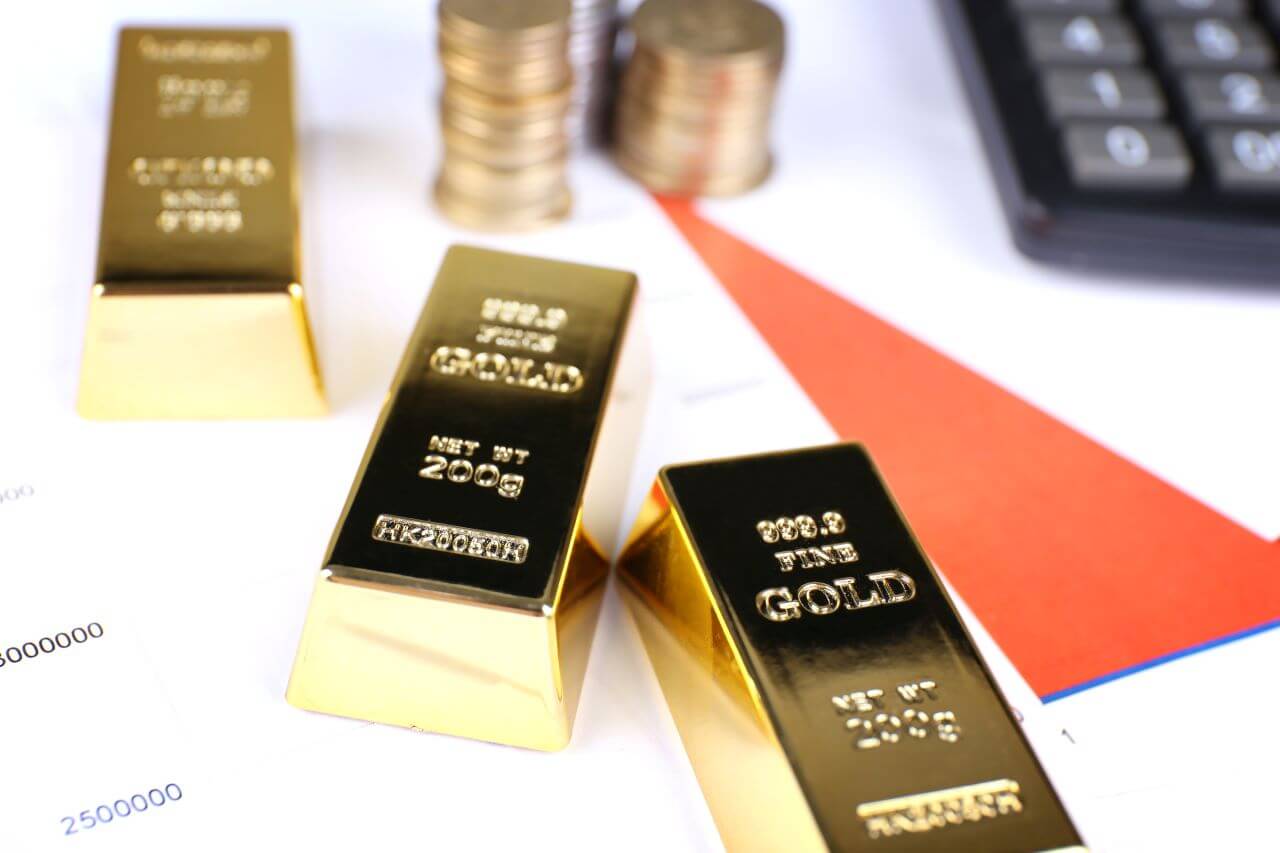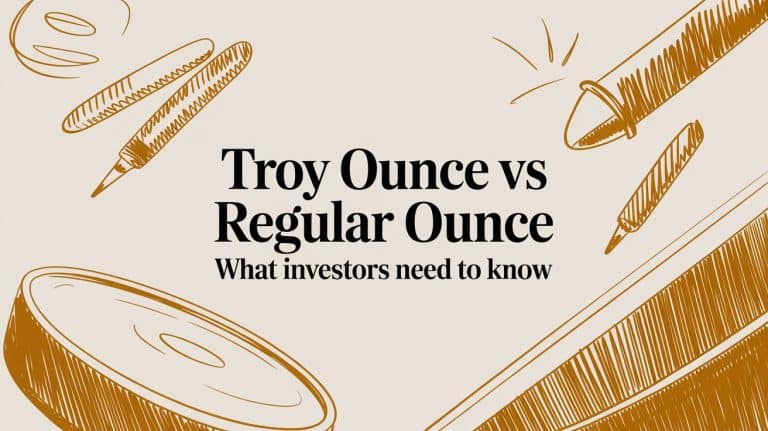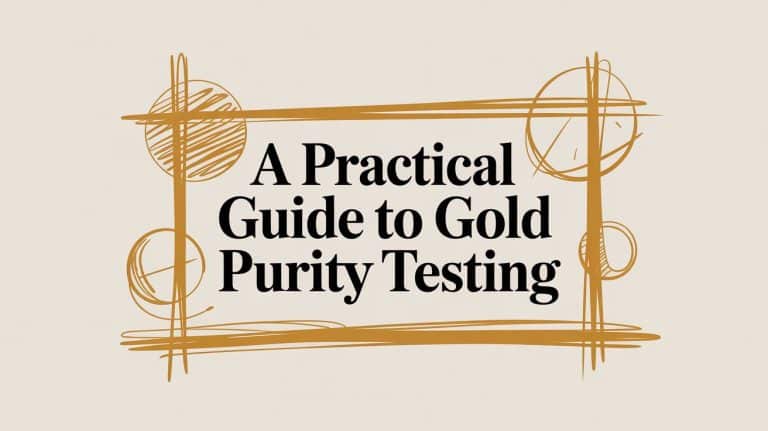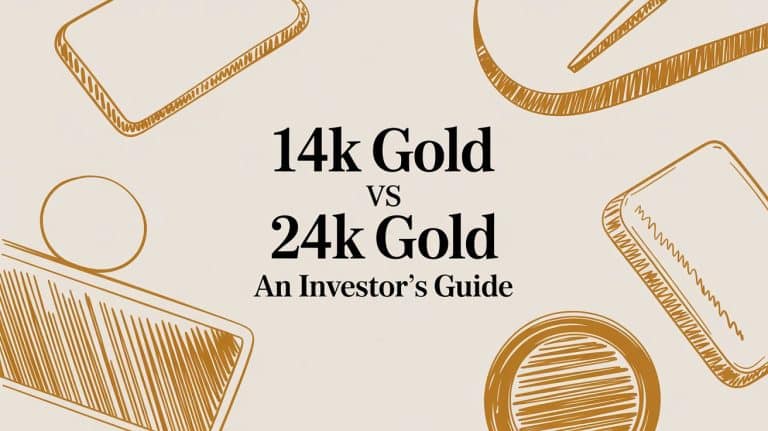Gold Showdown: The Ultimate Guide to 22k vs 24k Gold
There’s something captivating about gold, isn’t there? It’s a color, a feeling, a symbol of value and history all rolled into one. Whether you’re standing in a brightly lit jewelry store, scrolling through heirloom pieces online, or considering your first investment in a gold coin, you’ll quickly run into two little terms that can make a big difference: 22k and 24k. The debate over 22k vs 24k gold can feel confusing, with both having passionate fans. One is touted as the purest, the ultimate standard, while the other is praised for its practicality and beauty in adornment.
So, which one is actually “better”? Is the purest gold always the best choice? Or does the sweet spot lie somewhere in between? It’s a question that can leave you scratching your head, worried about making the wrong decision.
Well, you can relax. Think of us as your personal gold guide. We’re going to break down this entire topic in a simple, no-jargon way. We’ll explore what these numbers really mean, dive deep into the pros and cons of each, and help you figure out which type of gold is the perfect match for your needs, whether you’re looking to wear it, gift it, or invest in it. By the end of this guide, you’ll not only understand the difference, but you’ll feel confident in choosing the right gold for you.
Which Gold Is Better 22k or 24k
Before we pit these two heavyweights against each other, let’s get one fundamental thing straight: what in the world does the “k” stand for? That “k” is for karat, which is the system used to measure the purity of gold.
Imagine you have a pizza cut into 24 equal slices. In the world of gold, the entire pizza represents the piece of metal, and the karat number tells you how many of those 24 slices are pure gold.
- 24k Gold: This means all 24 out of 24 slices are pure gold. It’s the whole gold pizza! This makes 24k gold roughly 99.9% pure, which is the highest purity you can find.
- 22k Gold: This means 22 of the 24 slices are pure gold, and the remaining 2 slices are made of other metals, called alloys. This puts 22k gold at 91.67% purity.
Those other 2 slices in 22k gold aren’t just filler; they are there for a very important reason. Jewelers mix pure gold with stronger metals like copper, silver, zinc, or nickel. This process creates a gold alloy that has different characteristics from pure gold, which brings us to the heart of our comparison.
Purity: The Obvious Difference
As we just covered, the most significant difference between 22k and 24k gold is purity. 24k gold is the undisputed champion of purity. It is gold in its most unadulterated form, making it a benchmark for value across the globe. When you hear about the daily “spot price” of gold on the news, they are referring to the price of 24k gold.
22k gold, on the other hand, is an alloy. That 8.33% of non-gold metals might sound like a small amount, but it dramatically changes the properties of the gold, leading to some crucial differences in how it can be used.
Durability: The Deal Maker or Breaker
Here’s where the contest gets really interesting. While 24k gold wins on purity, it has a major weakness: it is incredibly soft. Pure gold is one of the most malleable and ductile of all metals, which is a fancy way of saying it can be easily beaten into thin sheets (malleable) or drawn into wires (ductile). While that’s a fantastic property for an artisan, it’s a significant disadvantage for everyday jewelry.
Imagine wearing a pure 24k gold ring. Just through normal daily activities like carrying groceries, typing on a keyboard, or gripping a steering wheel, that beautiful ring would quickly get scratched, dented, and bent out of shape. It’s simply too delicate for a life lived outside of a display case.
This is where 22k gold shines. Those alloy metals, like copper and zinc, are added specifically to strengthen the gold. This makes 22k gold significantly more durable and resilient. It can withstand the bumps and scrapes of daily life far better than its 24k counterpart, making it an excellent and popular choice for making jewelry. This is why intricate necklaces, bangles, and rings are very often made from 22k gold, especially in parts of the world like India and the Middle East where gold jewelry is deeply cultural and worn frequently.
Color and Appearance: A Matter of Taste
Purity doesn’t just affect durability; it also has a visible impact on color.
24k gold has a distinct, vibrant, and almost orangey-yellow luster. It’s a very rich and saturated color that is unmistakably pure gold. For many, this intense hue is the very definition of opulence and is highly sought after.
22k gold, because of the added alloys, has a slightly less intense yellow color. The exact hue can vary depending on the specific metals used in the alloy. For example, adding more copper will give the gold a warmer, reddish tone, which is how you get rose gold. Adding silver or palladium will give it a paler, softer yellow. To many people’s eyes, the slightly subdued color of 22k gold is more flattering and wearable than the bright pop of 24k gold.
Price and Value: Purity vs. Practicality
Naturally, since 24k gold contains more pure gold per gram, it is more expensive than 22k gold. All gold prices are ultimately derived from the spot price of 24k gold, so the higher the karat, the higher the price.
However, “price” and “value” are not always the same thing.
- For an investor, 24k gold offers the best value. When you buy gold as an asset, you are paying for the gold content itself. You want the most gold for your money, which means buying bars or coins in the purest form available.
- For a jewelry buyer, the value proposition is more complex. While a 22k piece is less expensive than a 24k piece of the same weight, it offers far more practical value because you can actually wear it without constant worry. The craftsmanship and design of the jewelry also add to its value, something that is less of a factor in investment-grade bullion.
Here’s a quick-glance table to summarize what we’ve learned so far:
| Feature | 22k Gold | 24k Gold |
|---|---|---|
| Purity | 91.67% pure gold (22 parts gold, 2 parts alloy) | 99.9% pure gold (24 parts gold, 0 parts alloy) |
| Durability | Strong and durable, suitable for daily jewelry wear. | Very soft and malleable, easily scratched and bent. |
| Best For | Jewelry, especially intricate and traditional pieces. | Investment in coins and bars, high-tech industry. |
| Color | Rich yellow, but slightly less intense than 24k. | Bright, vibrant, and deep orangey-yellow. |
| Price | Less expensive per gram than 24k gold. | The most expensive form of gold. |
How to Calculate 18k Gold Rate from 22k
This is a fantastic question that shows how interconnected gold pricing is. Sometimes, you might see the rate for 22k gold advertised, but you’re curious about an 18k piece. You don’t need to be a math genius to figure this out; you just need to work backward to find the price of pure gold.
Let’s break it down with an easy example.
Step 1: Find the Price of Pure (24k) Gold
First, you need the current rate for 22k gold. Let’s say the price for 1 gram of 22k gold is $65.
Remember, 22k gold is 91.67% pure. To find the price of 1 gram of pure 24k gold, you would use this formula:
- Price of 24k Gold = (Price of 22k Gold / 91.67) x 100
- Price of 24k Gold = ($65 / 91.67) x 100 = $70.90 (approximately)
So, the implied price for 1 gram of pure 24k gold is $70.90. This is your baseline.
Step 2: Calculate the Price of 18k Gold
Now that you know the price of pure gold, you can calculate the price of any other karat. 18k gold is 18 parts gold out of 24, which means it is 75% pure.
- Price of 18k Gold = Price of 24k Gold x 0.75
- Price of 18k Gold = $70.90 x 0.75 = $53.18 (approximately)
So, if 22k gold is priced at $65 per gram, the equivalent price for 18k gold would be around $53.18 per gram. This method works for calculating the price of any karat as long as you have a starting price for one known karat.
Which Is Better 22k or 24k Gold
So now we arrive at the million-dollar, or perhaps the gold-bar, question. After looking at purity, durability, color, and cost, which one is truly the better choice? The honest answer is: it completely depends on your purpose.
There is no single “best” gold. The best gold is the one that fits your needs and lifestyle.
The Case for 22k Gold: The Jewel of Jewelry
If your goal is to buy gold to wear, 22k is almost always the superior choice.
- Longevity and a Legacy: Jewelry is often sentimental. It’s given for weddings, anniversaries, and graduations. You want these pieces to last, to be passed down through generations. The durability of 22k gold allows for this longevity. An intricate 22k necklace will hold its shape and beauty for decades with proper care, whereas a 24k piece might not survive a few years of regular wear without significant damage.
- Intricate Designs: The strength of 22k gold also allows jewelers to be more creative. It’s strong enough to hold intricate patterns, delicate latticework, and even secure gemstones (though for very valuable stones like large diamonds, theeven stronger 18k or 14k gold is often preferred for prong settings).
- Cultural Significance: In many cultures, particularly in South Asia and the Middle East, 22k gold is the standard for high-quality jewelry. It strikes the perfect balance between high purity, which is culturally valued, and the necessary strength to be worn during celebrations and daily life.
The Case for 24k Gold: The Investor’s Standard
If you’re looking at gold as a financial asset or a long-term store of value, 24k is the only way to go.
- Maximum Value: When investing, you want the most concentrated form of the asset. You are buying pure gold, not craftsmanship or durability. 24k gold coins and bars are recognized and traded globally, making them highly liquid assets.
- The Global Standard: Investment-grade bullion, such as the famous Canadian Maple Leaf or American Buffalo coins, are minted in 24k gold. This ensures they can be easily bought, sold, and valued anywhere in the world.
- No Ambiguity: With 24k gold, there is no question about its content. It is pure, simple, and its value is tied directly to the international spot market, making it a clear and transparent investment.
Which Is Best 22k or 24k Gold: A Final Verdict
Let’s put it this way. Asking which gold is best is like asking whether a sports car or a pickup truck is the better vehicle. If you want to race on a track, the sports car is better. If you need to haul furniture, the pickup truck is the obvious choice. Neither is objectively “better” overall; they are simply built for different jobs.
Think of your decision in the same way:
- Choose 22k gold if:
- You are buying jewelry that you intend to wear regularly.
- You are giving a gift of jewelry that you want to be both beautiful and durable.
- You appreciate intricate craftsmanship and design in your gold pieces.
- You want a piece that has both high gold content and practical wearability.
- Choose 24k gold if:
- You are purchasing gold purely as an investment.
- You are buying gold bars or coins as a hedge against inflation or to diversify your portfolio.
- You value absolute purity above all else.
- The gold will be kept in a secure place like a safe or deposit box and not handled frequently.
Ultimately, the clash between 22k and 24k gold isn’t a battle to be won, but rather a choice to be understood. Both are valuable, both are beautiful, and both have their rightful place in the world of precious metals. By understanding their unique strengths and weaknesses, you can move beyond the simple question of “which is better” and confidently choose the perfect gold for your purpose. You are now equipped to make a decision that is not just smart, but is perfectly tailored to you.








